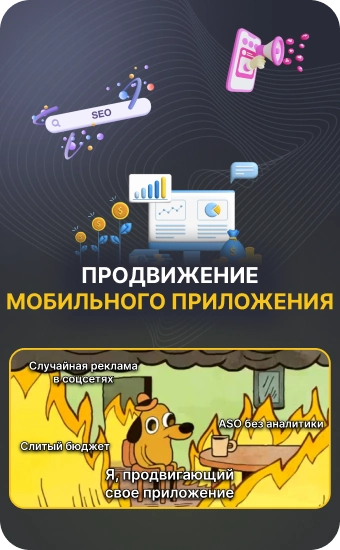Mobile app promotion: advertising, marketing, strategies and methods
Mobile app promotion: advertising, marketing, strategies and methods
No business can survive without promotion
Imagine your friend opened a small coffee shop on a quiet street and patiently waits for people to come to him. But there are still no visitors: giant networks and trendy, long-popular places work next door. You wonder why he doesn't buy ads, don't make promotions, doesn't think about promoting? It looks like it's going to burn out. What about your app? It can be convenient, beautiful, useful — but without a promotion strategy, the result will be the same. The market for mobile products is much tougher than a street full of coffee shops.
According to Statista, by the end of 2024, Google Play had about 2.87 million apps, and Apple's App Store had approximately 1.96 million apps. In total, this is more than 4.8 million active products, and their number continues to grow. The competition is prohibitive: according to Medium, about 68% of apps on Google Play don't even reach a thousand installs. Without marketing and systematic promotion, users simply won't know about your product.
There is no point in clutching at everything and randomly launching random ads: promotion should be planned systematically, building each step as part of a unified growth strategy. Today we'll look at how to promote apps and achieve real growth. Let's look at how an app promotion strategy is formed, what promotion methods work at different stages, where it is better to advertise, how to use ASO, paid and free channels, analytics, and audience retention.
How to lay the foundation for promotion?
How to lay the foundation for promotion?
Before investing in promoting a mobile app, you need to lay the groundwork — to understand who it is being created for, who you will have to compete with, and what makes you different. Without this base, ad campaigns turn into blind shooting.
1. Understand who you're creating a product for
Analysis of the target audience and competitors is the starting point of promotion. At this point, it's important to understand who your users are, what their goals are, their habits, and what problems the app should solve. Create multiple user personas — collective images that reflect real-life scenarios. This will help you speak to your audience in their language and use this knowledge to tailor ads to specific needs.
At the same time, explore the market: what apps already exist, what features are in demand, and what annoys users. According to Adjust, an in-depth analysis of the audience and the competitive environment makes it possible to identify unoccupied niches, more accurately position the product and reduce the number of errors after launch.
Examples of user personas:
- Ivan, 32 years old. He works in the office, enjoys sports and regularly goes to the gym. He wants to control nutrition so that training brings results. Existing power tracking applications are too complex and overloaded for him.
- Evgenia, 21 years old. A student, constantly busy with studies and part-time work. It needs a time planning tool, but the solutions available are expensive, inconvenient, and don't help build a system.
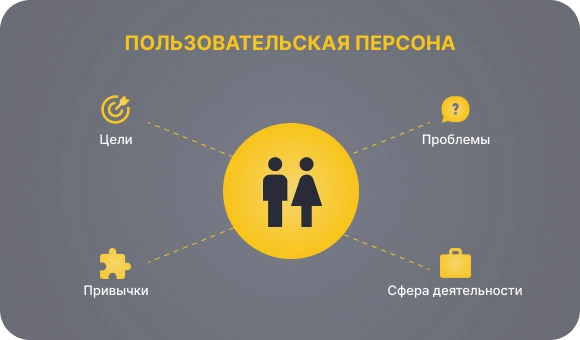
2. Generate a USP (unique trading offer)
The next step is to determine why a user should choose your app. UTP shows what its real value is and how the product differs from its competitors. This may be a new feature, a user-friendly interface, favorable conditions, original content, or a special style of communication with the audience.
- For example, if there are already dozens of sleep trackers on the market, your app might stand out not for the number of metrics, but for its visual visualization, personalized recommendations from AI, a branded mascot, or even short audio stories for the night.
A unique selling proposition becomes the basis of all communications — from store descriptions to advertising campaigns — and helps build a unified product image that the user remembers.
3. Develop a landing page
Another important preparation tool is a landing page, or landing page. Until the app appears in stores, the site acts as a showcase: it shows the product, explains its benefits and helps to collect the first contacts. On the landing page, you can post a release notification subscription form, screenshots, video previews, and a block with feedback from test users. All this creates a core audience even before launch and increases the credibility of the product. In addition, a landing page helps attract SEO traffic: while the application is not indexed in search, the site allows users to find information about it for thematic queries. This approach turns the waiting and development stages into a prepared starting base and helps accelerate progress from day one.
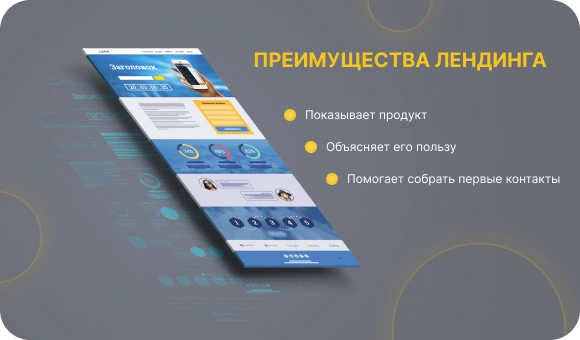
ASO: How to make the App Store and Google Play work for you
ASO: How to make the App Store and Google Play work for you
ASO is the process of improving an app's page on the App Store and Google Play so that it looks attractive, immediately explains the benefits of the product, and encourages you to install it. This tool shows you how to promote apps without a budget by simply arranging the card in the store correctly. You work with every element: title, description, icon, screenshots, videos, and reviews — everything should inspire trust and interest. This “polished” page is more likely to appear in search results, improves the app's ranking and increases the number of organic installs.
How to put ASO into practice
- Optimize texts and keywords. Work with the title, subtitle, keywords, and description. The name should be succinct and memorable, and the description should briefly explain the benefits of the product. The App Store has a separate field for keywords — it should be filled in with meaningful words. According to Apple, about 65% of installs are made after a keyword search, so text optimization directly affects app visibility.
- Make the visual attractive and informative. The icon, screenshots, and video previews decide whether the user pays attention. On average, a person spends about 7 seconds on the application page and most often only looks at the first two screenshots — this is where the main USP should be taken. The icon should be simple and recognizable, and screenshots should show the interface and benefits with short captions. Video previews help show functionality and increase conversions.
- Work with ratings and reviews. Ratings and comments influence trust and search positions. A ranking increase from 3 ★ to 4 ★ can increase conversions by almost 90%. Ask satisfied users to leave a rating, post a review request at the right time, and respond to comments. Active interaction with the audience strengthens the app's reputation and improves the app's visibility in stores.
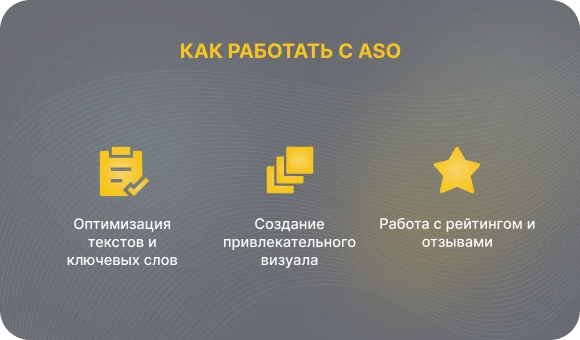
Paid promotion channels: where to advertise your app
Paid promotion channels: where to advertise your app
Organic growth is a good start, but if you need to get a product to market quickly, you can't do without paid tools. They help attract an audience, test hypotheses, and use different ad formats to increase the number of installs and strengthen positions in stores. Below are the main methods that actually work to promote a mobile application.
Targeted advertising on social media
Social media is one of the most powerful spaces for promoting apps. VKontakte, Telegram Ads, TikTok, and Meta Ads make it possible to customize promo posts, banners, and video ads for a specific audience — by interests, geography, behavior, and even community subscriptions.
Benefits: accurate segmentation, flexible budget settings, retargeting, and quick results.
Disadvantages: high competition, the risk of “burning” the budget without competent analytics.
Advice: test creatives and audiences, track attitudes through analytical platforms.
Search engine advertising
Contextual advertising on Yandex.Direct and Google Ads helps attract “hot” users — those who are already looking for a solution to their problem. For example, a person types in the query “workout app at home” and sees your ad.
Benefits: attracting “hot” users who are already looking for a solution to their problem. Payment is only for clicks.
Disadvantages: high cost per click in competitive niches.
Advice: select accurate keywords and create ads with a clear USP.
In-app advertising
In-app advertising is the display of ads within other mobile apps. You can place a banner, video, or interactive ad via AdMob, Unity Ads, AppLovin, or myTarget platforms. The user sees the ad, clicks and immediately goes to the store for installation.
Benefits: direct access to the mobile environment, high conversion rate, the possibility of accurate thematic targeting.
Disadvantages: high cost of installation (CPI) in popular categories.
Advice: use this channel when the app economy is calculated and allows you to pay for expensive traffic.
Advertise with bloggers and opinion leaders
Recommendations from trusted people work harder than any advertising campaign. Bloggers talk about apps in videos, posts, or stories, and their audience takes this as personal advice.
Benefits: high engagement and word of mouth effect.
Disadvantages: it is difficult to predict results and measure efficiency; the cost of advertising for popular bloggers is high.
Advice: choose bloggers by audience relevance, not by number of subscribers.
Media and PR publications
PR remains an important part of the promotion strategy. Reviews, interviews and press releases in specialized media build trust and create an informational message around the app.
Benefits: increased recognition, high-quality audience, SEO effect.
Disadvantages: the result is not immediate; an informational reason is required.
Advice: prepare press releases in advance, add facts, quotes and screenshots to make it easier for the media to produce material.
Combine different channels to make paid campaigns work effectively. Social media provides reach, search provides hot leads, in-app provides scale, bloggers provide trust, and PR strengthens reputation. Together they form a sustainable promotion system and accelerate app growth.
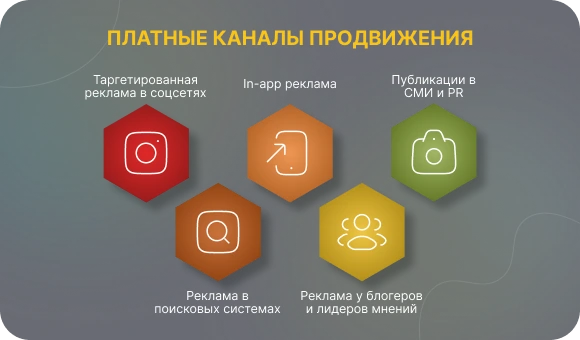
Free promotion methods: how to promote an app without a budget
Free promotion methods: how to promote an app without a budget
Even if your marketing budget is limited, this is no reason to stay in the background. App promotion can come naturally — through content, community, and communication with users. Organic methods do not require investments, but they create a stable connection with the audience and increase brand confidence. It is important to use these channels in such a way that they work for audience growth and brand trust.
Content marketing
Create materials that benefit users and unobtrusively introduce them to the app: articles, guides, videos, and case studies. People are looking for answers to their questions—and you're giving them through content where the app is naturally woven into the topic.
Benefits: organic traffic, increased trust and expertise, long-term effect — one article can attract users for months.
Disadvantages: It takes time and regularity.
Advice: publish useful content about your product — user stories, training videos, collections of life hacks. This content does not sell directly, but builds interest and trust.
SMM and community
Develop your app's social media pages: share news, updates, tips, launch interactive activities and contests. The main thing is not just to broadcast, but to communicate. Users who are involved in the community become more loyal and share your content more often.
Benefits: direct contact with the audience, increased awareness, word of mouth.
Disadvantages: requires constant attention and creativity.
Advice: Don't post ads, but live content — surveys, challenges, posts with user participation. Algorithms promote active communities, and people respond better to the “human” tone.
Email marketing
Work with a subscriber base collected through a landing page or within an app. Emails help remind you about yourself, talk about updates, and bring back inactive users.
Benefits: high engagement and payback — email remains one of the most effective channels (ROI up to 3600%).
Disadvantages: you need a careful approach — frequent emails are annoying, rare ones lose their effect.
Advice: send emails with real benefit: usage tips, announcements of new features, congratulations, reminders. Personalize content to increase user retention.
Organic methods do not give instant changes in installations, but form the basis for long-term growth. Content attracts, social networks engage, newsletters retain — together they turn users into a community that helps promote the app itself.
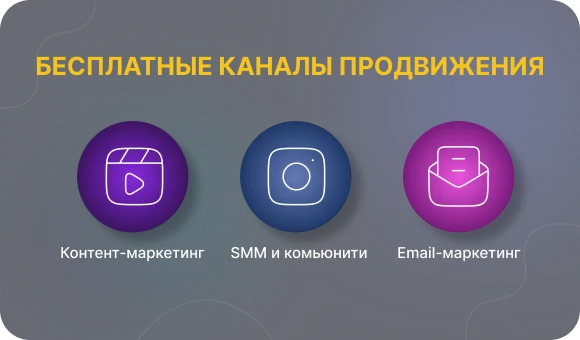
How to retain users after installation: work that ads won't do
How to retain users after installation: work that ads won't do
When a mobile app ad brings installation, it's not the end, it's the start of work. A user can open the app once and forget about it forever. To prevent this from happening, we need to build a restraint system. Research shows that attracting a new user can be up to 25 times more expensive than retaining a new user. In the mobile segment, the losses are huge: up to 70% of installers delete the app in the first months. Therefore, a well-thought-out retention strategy does not just complement marketing, but becomes its core. It maintains interest, returns users, increases their loyalty, and has a direct impact on profits.
Push notifications: remind, not annoy
Good pushes bring users back to the app; bad ones encourage users to delete it. Only notifications that are useful work: they remind you of a task, provide important news, or motivate you to take action. The main thing is not to overload: more than five notifications a week are already annoying and increase the risk of deleting the application.
- Example: The food delivery app sends a message: “Your favorite restaurant has reopened. Today is 15% off your first order.” The user receives a notification at an understandable benefit and on time.
Loyalty programs and bonuses: reward activity
Users are more likely to return to places where there is benefit or progress. Loyalty programs, bonuses, and gamification keep you focused and create a habit of using the platform. Even a small sense of achievement motivates you to come back. According to Bain & Company, an increase in retention of just 5% can increase profits by up to 95%.
- Example: The fitness app awards points for training and unlocks new levels when you reach your goals. The user sees their progress, receives badges and returns so as not to interrupt the series.
Updates and feedback: show that the app is live
Regular updates and working with reviews have a direct impact on loyalty. The user stays when they see that the application is developing and their opinion is taken into account. This is a simple but effective strategy: active improvements keep users longer than any promotions or push.
- Example: The team is releasing an update with a “dark theme” feature and adding a line to the update description: “Thanks to everyone who commented — we heard you!” Users feel that developers are responding to requests and continuing to use the app.
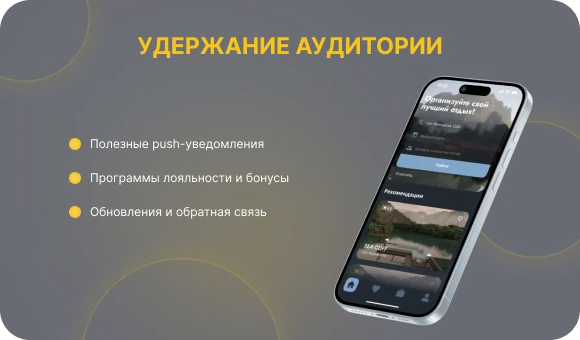
The promotion works while you're working on it
The result appears when all stages work together: analyzing the target audience and competitors, creating a strong positioning, optimizing a page in stores, and thoughtful advertising for a mobile application. App promotion methods are effective only in combination: ASO increases visibility, paid channels accelerate growth, and free channels form a stable flow of installs.
It is equally important to retain those who have already installed the product. Push notifications, loyalty programs, and regular updates turn random installs into a loyal audience. Promotion does not end at the recruitment stage — it is a process of continuous analysis, optimization and improvement of the user experience. This is a marathon where success comes to those who regularly test approaches, monitor metrics and improve strategies.
Stop wasting your budget on ineffective ads. We know how to turn marketing investments into real users and profits. Our goal is not just to install, but to attract an audience that will actively use your app and generate revenue. Do you want to see real growth? Contact us to calculate your app's potential and launch your first ad campaign.



